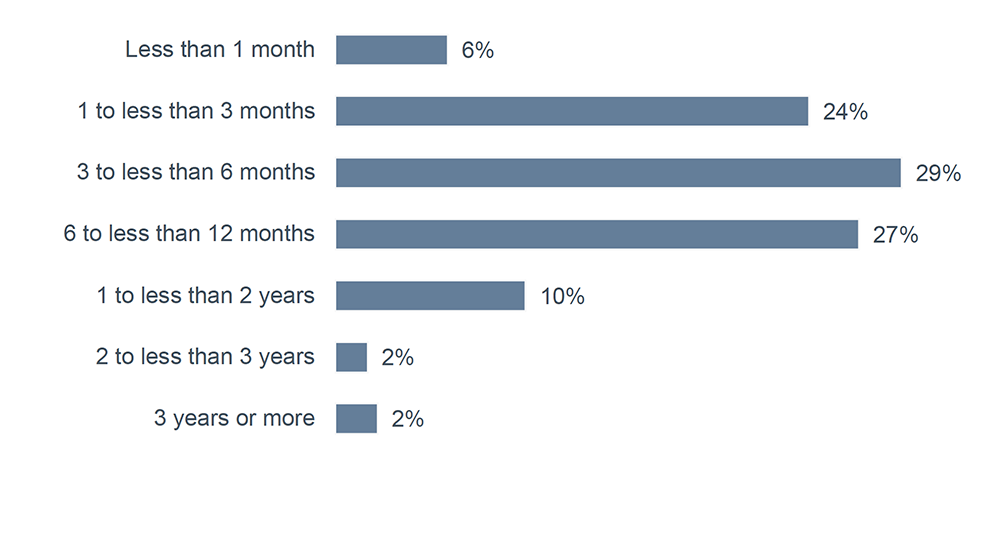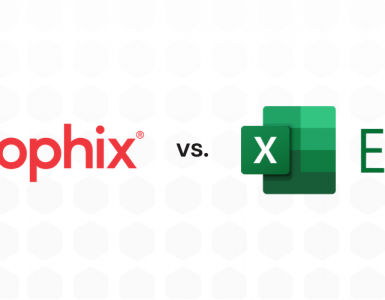It is paradoxical: professional solutions for CPM (corporate performance management) have long ceased to be an insiders’ tip, having proven themselves over the years in practice. Nevertheless, some companies prefer to wait and continue to make do with Excel. BARC analyst Dr. Christian Fuchs explains where this hesitation stems from and what consequences are associated with this.
Our world is changing faster than ever expected. What was considered a sure thing yesterday may already be obsolete tomorrow. To keep up, companies must therefore meet ever-increasing demands. This applies in particular to the speed, foresight, and agility of corporate management.
So what is to be done? Best-in-class companies are addressing this challenge with integrated CPM solutions and are excelling through increased visibility and control in their planning and management processes. This has become common knowledge: more and more decision-makers are recognizing the growing importance of CPM and want to jump on the bandwagon.
However, despite the realization that software-aided CPM is essential for modern corporate management and governance, many companies shy away from the expense and risk associated with tackling such a project.
Most concerns are unfounded
Decision-makers who have never been involved in CPM projects before (e.g. at a previous employer) face a major challenge: often there are clear expectations of the resulting benefits, but the approach to take and the scope of the selection and implementation project are a big unknown. In practice, this combination of factors often leads to projects being overestimated in terms of scope and complexity, as they are very difficult to evaluate without the necessary expertise. In the worst case, this can lead to a project being declared unfeasible before an expert is able to correctly assess the situation.
Also, an unclear project definition may cause the introduction of CPM to be ill-fated. If, for example, a project is started from within the controlling department without first having carried out a requirements analysis in the other departments, including IT, this omission often comes back to haunt those involved in the further course of the project.
The good news: it is not as bad as it seems.
For the software selection process, you should generally estimate 3-6 months. So that this immensely important first step succeeds, I recommend that you read both my tips for a well prepared selection project and list of the biggest mistakes so that you know what to look out for.
It then comes to the actual implementation project for the selected solution. The results of the BARC Planning Survey 18 show that medium-sized CPM implementations can typically be realized in 2-6 months (see Figure 1). This means that a complete CPM selection and implementation project – that is, from project start to roll-out – can be accomplished in 5-12 months. So it is definitely not the monster project that some people seem to envisage.

The recommendation is always “Think big, start small”. A manageable project period is a critical factor in the successful selection and implementation of a CPM solution. Therefore, focus on partial aspects of your overall task to generate “quick wins”. These not only create acceptance, but also serve as internal marketing for the project. Generally, the shorter the selection and implementation period, the higher the direct benefit of your project and the likelihood of completing the project on time and on budget.
Why the clock is ticking – including in your company
While CPM is (understandably) largely new territory for many decision-makers, Excel is often the opposite: you’ve known each other for ages, you’ve been through a lot together, and that’s why you’re maybe even a bit sentimental. Although this is understandable in human terms, it impairs objectivity massively. While Excel can certainly often be a viable solution for smaller companies, for example, to cover budgeting, as soon as an organization reaches a certain size – and with it both higher requirements and increased complexity – Excel quickly becomes a problem because it was simply not designed to meet the growing CPM needs of mid-sized companies in the twenty-first century.
As comfortable as the persistence of existing processes may be, it is nothing more than stagnation. In a world that places new demands on companies every day, this preservation of the status quo sends you backwards a little more with each passing second. The distance to competitors that keep pace with developments therefore steadily grows.
In addition to its known shortcomings (susceptibility to errors, inconsistencies, high manual effort etc.), Excel also causes displeasure among its users, something that is confirmed, among other things, by the results of the current BARC Planning Survey 18. The vast majority of users who have special CPM solutions in use would also recommend them. However, advocacy for Excel is much more subdued (Figure 2).

Conclusion
The anxiety is unfounded: CPM projects today are not rocket science and can usually be completed much faster than feared. So do not be unsettled by the complexity of the topic and the wide range of solutions – the abundance of options also has a positive effect: there is usually a suitable solution on the market for every conceivable requirement. So, you are likely to find what you are looking for. Also, talk to others who faced the same challenge and successfully mastered it. In this way, you may be able to learn from others’ mistakes and save valuable time and resources.
Above all, however, there is one thing you should not forget: in the end, it is up to you whether your company uses CPM and prepares itself for the future – or rather waits and tries to maintain the status quo as long as possible. The latter may be the more convenient option in the short term, but it is definitely not the better one.






